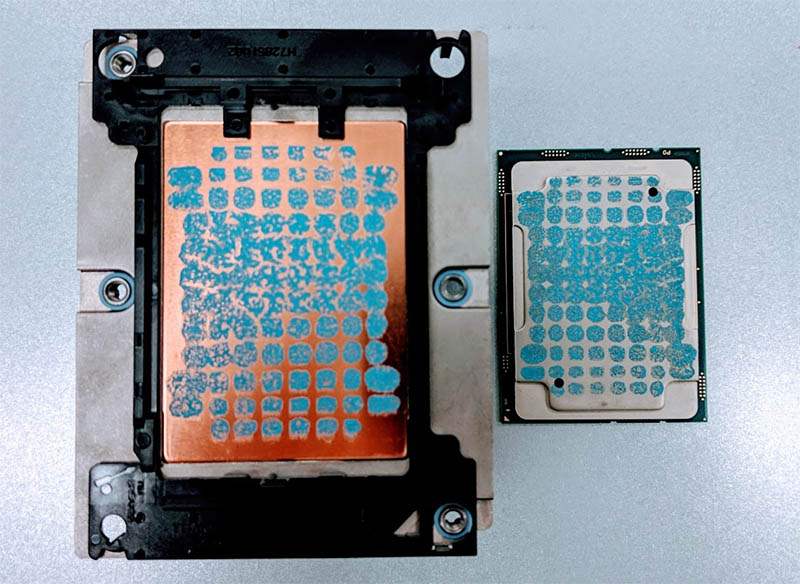Lenovo ThinkSystem SR650 Specs As Tested
We had a fairly standard configuration sent from Lenovo.
- Server: Lenovo ThinkSystem SR650, single CPU, and single PSU configuration
- CPU: Intel Xeon Gold 6150
- Memory: 1x 32GB DDR4-2666 ECC RDIMM and 6x 16GB ECC RDIMMs
- Networking: Lenovo dual 1GbE LOM. Mellanox ConnectX-4 Lx 25GbE, Mellanox ConnectX-3 Pro 40GbE
- Storage: Broadcom SAS9460-8i with BBU and Lenovo 480GB SATA SSD
We had to augment this configuration heavily. Intel Xeon Scalable platforms will run with a single DIMM per CPU but can take up to twelve per and needs six per CPU to get maximum performance. The system is capable of dual processor operation, but the air shroud was designed for a single CPU.
One of the major areas we augmented was in the heatsink. The system we received from Lenovo utilized the stock heatsink and thermal compound for the Intel Xeon Gold 6150. Everything worked well, but we noticed that the Intel Xeon Gold 6150 was performing about 3% lower than our previous work with the CPU would suggest. We opened the system up and saw this:

That is a fairly standard TIM pattern used by several vendors where small squares of TIM are placed on the heatsink. When the heatsink is affixed, it compresses the TIM which spreads out to cover the chip. In our case, the CPU was not set properly even though the LGA3647 mechanism was engaged and properly torqued. Since the CPU did not have proper contact with the heatsink, it was throttling due to heat earlier than one would expect. This caused the 3% loss in performance.
Lenovo is a major vendor, so we are going to give them the benefit of the doubt here and perhaps this is a one-off issue. Instead of using the Lenovo thermal solution and Gold 6150, we used what we had in-house which gave figures consistent across the board with what we have seen elsewhere. This is a departure from our norm, but we made the call to expedite the rest of the review.
There is a lot more that the Lenovo ThinkSystem SR650 can do, and we are doing our best to ensure you get some sense of that given this configuration.
Lenovo ThinkSystem SR650 Hardware Topology
One area that we are keenly aware of today, and will be increasingly so with future multi-chip packages, is system topology. Since our test system had a relatively simplistic single CPU design, it has a simple topology to match. Here is the system with the Gold 6150:

LOMs, RAID cards, and all of the basic features are attached to the first CPU which means that the Lenovo ThinkSystem SR650 works well even in a single CPU configuration. If one wants full PCIe lane connectivity, the second CPU is necessary.
Next, we are going to look at management before getting into our performance and power consumption testing.




dang, 9.2. you must have really hated this one!
I’m looking for a cheap software-defined-storage server that would run Red Hat Ceph, anyone would recommend this or something similar for a Private OpenStack cloud?
Are the connectors on the sata/sas backplane standard or proprietary?